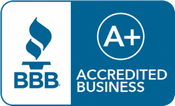We first brought the concept of Net Investment Income Tax (NIIT) to your attention in 2013. It was new then, part of a slew of higher income tax burdens tied to Obamacare. Over the past few years we’ve had the chance to see the NIIT, a.k.a. Medicare Contribution Tax, in action and how it impacts business owners. Simply put, it’s been a bit of a shock. It’s confusing and potentially very expensive. Still, it’s one tax that can be mitigated -- even eliminated -- with proper planning. As we approach the end of another calendar year, let’s consider the NIIT again and devise some tactics to minimize its effect.
The NIIT is an add-on surtax applied to unearned income above a certain income threshold. If an individual has income from investments, he/she may be subject to NIIT. Individual taxpayers are liable for a 3.8% Net Investment Income Tax on the lesser of their net investment income, or the amount by which their modified adjusted gross income exceeds the statutory threshold amount based on their filing status.
The statutory threshold amounts are:
- Married filing jointly — $250,000,
- Married filing separately — $125,000,
- Single or head of household — $200,000, or
- Qualifying widow(er) with a child — $250,000.
In general, net investment income includes, but is not limited to: interest, dividends, capital gains, rental and royalty income, and non-qualified annuities.
Most taxpayers will not be subject to the NIIT because their income is under the minimum amount. The same cannot be said for business owners; they are particularly vulnerable to the tax. How can it be avoided? Here are 5 quick ideas every business owner should consider:
- Defer current wages. By participating in a company qualified and/or nonqualified deferred compensation program, a business owner may proactively structure reportable income to be just below the threshold. This will avoid the 3.8% tax during working years. Although the deferred income from qualified and nonqualified plans will be taxable when paid out at retirement, the owner will likely be in a lower income bracket because wages are no longer being earned. These employer plans can be leveraged to both defer income taxes and potentially avoid the 3.8% tax.
- Spread out capital gains. The sale of a business interest for a lump sum can generate a sizeable capital gain and, with the 3.8% tax, potentially launch the taxpayer into the top marginal bracket (in the year of sale) to 23.8%. An installment sale, however, will spread out payments over a number of years, and thereby spread out capital gains. This may keep income under the threshold for both the 3.8% tax and the top marginal tax bracket — effectively lowering the capital gain rate to 15%.
- Review your current business tax structure. Not all income is subject to NIIT. NIIT does not include C Corp income, wages, bonuses, qualified retirement plan distributions, operating income from a non-passive business, and self employment income. Talk with your advisors now about changing your business tax structure.
- Materially participate in the business. If you increase material participation in a business you own, you can potentially convert income from passive activity income into a non-passive activity. This can remove the income from exposure to the 3.8% tax. This will require some careful record keeping, however. Be sure to keep on top of it.
- Pay the tax now. It sounds crazy, but it just might make sense. Unlike many of the tax provisions that affect higher income taxpayers, NIIT is not indexed to inflation. The practical outcome is that the 3.8% NIIT will increase with time and more taxpayers will be subject to it. In some situations the 3.8% tax may be a one-time event occasioned by the sale of a business interest. The $250,000 threshold has more “buying power” to save taxes currently than it will when inflation erodes its value in the future. So, especially if you expect future increases in income, pay the tax now to save yourself in the long run.
As always, we urge you to think about tax issues early and often. The more you plan, the less taxes you’ll owe. Plain and simple.





